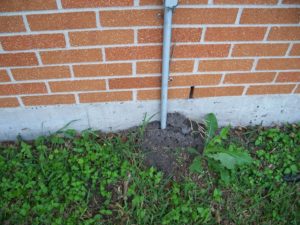A new online pest risk evaluation tool will help school integrated pest management (IPM) coordinators around the country assess what pest problems exist in their school and where they are. The tool is featured in an article in the Journal of Extension.
 Adoption of IPM in a school often happens reluctantly, after IPM practices are mandated or after numerous reports of pests in the school. Many schools contract with pest control companies to do a monthly treatment, but results can be uneven if the source of the pest problem is not addressed.
Adoption of IPM in a school often happens reluctantly, after IPM practices are mandated or after numerous reports of pests in the school. Many schools contract with pest control companies to do a monthly treatment, but results can be uneven if the source of the pest problem is not addressed.
Some schools have access to expert assessment of pest problems, but not all of them use it, and many don’t have the budget for it if it is not freely available.
To address the accessibility issue, a group of school IPM specialists from Texas created an IPM Calculator to highlight pest problems in a school. The Calculator consists of a survey that can be taken online at http://ipmcalculator.com. Users can evaluate several school buildings and compare them. Questions cover pest issues on the outside as well as the inside of the building.
The Calculator assesses pest risk for 18 key pests within 34 building features and maintenance practices. Once the survey is completed, the calculator produces two scores: one for current pest risk and the other for potential pest risk. Potential pest risk is an estimate of what pests might be problems in the future, based on the building condition, sanitation and maintenance practices, and major pests in that region.
Scores are based on the health and economic risks of pests present in the building, so the presence of German cockroaches—with a high health risk—would yield a higher risk score than the presence of ants.
Evaluations in 43 individual school buildings in Alabama, California, Florida, Louisiana, Maine and Texas showed that the scores from the IPM Calculator were only 5 percentage points lower than school IPM Extension specialist scores for the same buildings.
“Most IPM Coordinators were already aware of the score that their building was going to receive,” says Janet Hurley, School IPM Extension Program Specialist at Texas A&M AgriLife and one of the authors of the article. “However, they were surprised at where the problems were located. The Calculator pointed out areas that they weren’t previously aware of.”
Recommendations generated by the Calculator often include repairs that are inexpensive. Often the Calculator identifies human habits that are causing pest problems, such as clutter or poor cleaning practices in a classroom.
“When we used the Calculator on John McDonogh High School in New Orleans, the Calculator identified the areas that needed to be fixed,” says Hurley. “It’s hard to keep rats out of a building when there are no window panes on the windows.”
School IPM experts like Hurley and her colleagues at other land-grant universities love the tool because it gives school facilities managers more independence in assessing their pest problems.
“It helps them identify problems so they can spend their money more wisely,” Hurley says. “Not only does it identify where sources of pest problems are, but it also points out other indoor air quality problems.”
This research was funded by USDA National Institute of Food and Agriculture and a Southern IPM Center IPM Enhancement grant.
Read more:
Bennett, B., Hurley, J., and Merchant, M. (April 2016) An integrated pest management tool for evaluating schools. Journal of Extension, 54:2


 .
.